(Originally Posted June 2013… many of the links to Phileena Heuertz’s blog posts have been nixed by her… so many of the links to them scattered below are dead. FYI)
“Fr. Thomas Keating teaches on centering prayer who tells us contemplative prayer is a way of tuning into a fuller level of reality that is always present …“(Open mind, Open heart p.37). He explains “My acquaintance with eastern methods of meditation has convinced me that … there are ways of calming the mind in the spiritual disciplines of both the east and the west … Many serious seekers of truth study the eastern religions, …“What he is promoting is the concept of God permeating the air as prana.” (Lighthouse Trails)
Over the years I have noticed that Biola is going down a road that is based not in Christ, but in Eastern philosophy. For instance, my first encounter wit this came from an assistant pastor at a church in my town. When I was talking about how contemplative prayer came to our current faith (India, Alexandria, the Desert fathers, Thomas Merton, and then Keating/Nouwen/Foster, and the like), this pastor was shocked, and recommended a book he was studying in a class at Biola entitled, “A Seven Day Journey with Thomas Merton.” In it you have the Christian faith laid into the matrix of Buddhist thought. Over the years since this jaw-dropping encounter with a pastor from a “Biblically conservative” church not seeing any problem with the book HE recommended to me, I have become more interested in where Biola was heading. And over the years they seem to put a stamp of approval on things un-Biblical. The most recent being a video presentation on Biola’s YouTube by Phileena Heuertz. She gave a presentation on, you guessed it, contemplative prayer.
In a question directed at Mrs. Heuertz elsewhere, Janice Kraus asks:
- “I am trying to learn more about ‘Who I am’ and starting to use Mediation for purpose of changing my ways of thinking : Do you have any links for this and How can I find out who am I?”
Mrs. Heuertz responds:
- dear janice, thanks for your honesty. i think we will all spend the rest of our life learning more about who we are. if you like to read, i recommend books by Henri Nouwen, Thomas Keating, Richard Rohr to support your journey. you can also check out my website at www.phileena.com for a list of recommended books and various blog posts that may assist you. ~be well. breath deep.
This response alone is telling. As is her recommended reading list (see APPENDIX BELOW) from her site, it is a who’s who of New Age influence and Eastern metaphysics in the guise of Christianese. For instance, let’s deal JUST with Henri Nouwen whom she recommended above, and I wish to quote from my chapter on this topic, IN WHICH I quote from David Cloud’s book (pp. 317-321), Contemplative Mysticism: A Powerful Ecumenical Bond (Port Huron, MI: Way of Life Literature, 2008). It touches on a few other characters as well in Phileena’s reading list, like Sue Monk Kidd, but Nouwen’s alignment not with the Good News, but with Eastern metaphysics becomes clear:
QUOTE
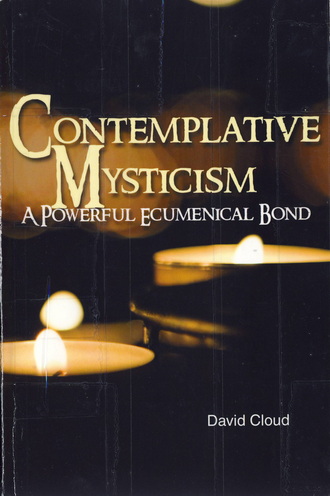
Henri J.M. Nouwen (1932-1996) was a Roman Catholic priest who taught at Harvard, Yale, and the University of Notre Dame. Nouwen has had a vast influence within the emerging church and evangelicalism at large through his writings, and he has been an influential voice within the contemplative movement. A Christian Century magazine survey conducted in 2003 found that Nouwen’s writings were a first choice for Catholic and mainline Protestant clergy….
Nouwen did not instruct his readers that one must be born again through repentance and personal faith in Jesus Christ in order to commune with God. The book With Open Hands, for example, instructs readers to open themselves up to God and surrender to the flow of life, believing that God loves them unconditionally and is leading them. This is blind faith.
“When we pray, we are standing with our hands open to the world. We know that God will become known to us in the nature around us, in people we meet, and in situations we run into. We trust that the world holds God’s secret within and we expect that secret to be shown to us” (With Open Hands, 2006, p. 47).
Nouwen did not instruct his readers to beware of false spirits and to test everything by the Scriptures. He taught them, rather, to trust that God is leading in and through all things and that they should “test” things by their own “vision.” Nouwen claimed that contemplative meditation is necessary for an intimacy with God:
“I do not believe anyone can ever become a deep person without stillness and silence” (quoted by Chuck Swindoll, So You Want to Be Like Christ, p. 65).
He taught that the use of a mantra could take the practitioner into God’s presence.
At the end of his life, in the last book he ever wrote (Sabbatical Journey), Henri Nouwen said the following: Even though such a statement does not at all fit within biblical Christianity, and in essence denies the very foundation of Christ’s work on the Cross, Henri Nouwen is touted as a great spiritual figure by countless Christian leaders, pastors, seminary professors, etc. (A response from the editor at Lighthouse Trails)
“The quiet repetition of a single word can help us to descend with the mind into the heart … This way of simple prayer … opens us to God’s active presence” (The Way of the Heart, p. 81).
He said that mysticism and contemplative prayer can create ecumenical unity because Christian leaders learn to hear “the voice of love”:
“Through the discipline of contemplative prayer, Christian leaders have to learn to listen to the voice of love. … For Christian leadership to be truly fruitful in the future, a movement from the moral to the mystical is required” (In the Name of Jesus, pp. 6, 31, 32).
In fact, if Christians are listening to the voice of the true and living God, they will learn that love is obedience to the Scriptures. “For this is the love of God, that we keep his commandments: and his commandments are not grievous” (1 John 5:3).
Nouwen, like Thomas Merton and many other Catholic contemplatives, combined the teaching of eastern gurus with ancient Catholic practices. In his book Pray to Live Nouwen describes approvingly Merton’s heavy involvement with Hindu monks (pp. 19-28).
In his foreword to Thomas Ryan’s book Disciplines for Christian Living, Nouwen says:
“[T]he author shows a wonderful openness to the gifts of Buddhism, Hinduism, and Moslem religion. He discovers their great wisdom for the spiritual life of the Christian and does not hesitate to bring that wisdom home” (Disciplines for Christian Living, p. 2).
Nouwen taught a form of universalism and panentheism (God is in all things).
- “The God who dwells in our inner sanctuary is the same as the one who dwells in the inner sanctuary of each human being” (Here and Now, p. 22).
- “Prayer is ‘soul work’ because our souls are those sacred centers WHERE ALL IS ONE … It is in the heart of God that we can come to the full realization of THE UNITY OF ALL THAT IS” (Bread for the Journey, 1997, Jan. 15 and Nov. 16).
He claimed that every person who believes in a higher power and follows his or her vision of the future is of God and is building God’s kingdom:
- “We can see the visionary in the guerilla fighter, in the youth with the demonstration sign, in the quiet dreamer in the corner of a cafe, in the soft-spoken monk, in the meek student, in the mother who lets her son go his own way, in the father who reads to his child from a strange book, in the smile of a girl, in the indignation of a worker, and in every person who in one way or another dreams life from a vision which is seen shining ahead and which surpasses everything ever heard or seen before” (With Open Hands, p. 113).
- “Praying means breaking through the veil of existence and allowing yourself to be led by the vision which has become real to you. Whether we call that vision ‘the Unseen Reality,’ ‘the total Other,’ ‘the Spirit,’ or ‘the Father,’ we repeatedly assert that it is not we ourselves who possess the power to make the new creation come to pass. It is rather a spiritual power which has been given to us and which empowers us to be in the world without being of it” (p. 114).
The radical extent of Nouwen’s universalism is evident by the fact that the second edition of With Open Hands has a foreword by Sue Monk Kidd. She is a New Ager who promotes worship of the goddess! Her book The Dance of the Dissident Daughter: A Woman’s Journey from Christian Tradition to the Sacred Feminine was published in 1996, a decade before she was asked to write the foreword to Nouwen’s book on contemplative prayer. Monk Kidd worships herself.
- “Today I remember that event for the radiant mystery it was, how I felt myself embraced by Goddess, how I felt myself in touch with the deepest thing I am. It was the moment when, as playwright and poet Ntozake Shange put it, ‘I found god in myself/ and I loved her/ I loved her fiercely (The Dance of the Dissident Daughter, p. 136).
- “Over the altar in my study I hung a lovely mirror sculpted in the shape of a crescent moon. It reminded me to honor the Divine Feminine presence in myself, the wisdom in my own soul” (p. 181).
Sue Monk Kidd’s journey from the traditional Baptist faith (as a Sunday School teacher in a Southern Baptist congregation) to goddess worship began when she started delving into Catholic contemplative spirituality, practicing centering prayer and attending Catholic retreats.
Nouwen taught that God is only love, unconditional love.
“Don’t be afraid to offer your hate, bitterness, and disappointment to the One who is love and only love. … [Pray] `Dear God, … what you want to give me is love–unconditional, everlasting love”’ (With Open Hands, pp. 24, 27).
In fact, God’s love is not unconditional. It is unfathomable but not unconditional. Though God loves all men and Christ died to make it possible for all to be saved, there is a condition for receiving God’s love and that is acknowledging and repenting of one’s sinfulness and receiving Jesus Christ as one’s Lord and Saviour.
Further, God is not only love; He is also holy and just and light and truth. This is what makes the cross of Jesus Christ necessary. An acceptable atonement had to be made for God’s broken law.
In his last book Nouwen said:
“Today I personally believe that while Jesus came to open the door to God’s house, all human beings can walk through that door, whether they know about Jesus or not. Today I see it as my call to help every person claim his or her own way to God” (Sabbatical Journey, New York: Crossroad, 1998, p. 51).
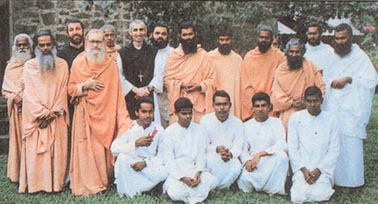
UNQUOTE
This radical rejection of the major tenants of the Christian Worldview, and acceptance of major tenants within Eastern metaphysics causes all sorts of interpretive problems for Phileena. Take for instance her understanding of the clear thesis/antithesis Jesus sets up in comparing His mission and how the world should understand the absolute worldview entwined in that mission. Here is a great Commentary on these words spoken of in Matthew 7:13:
Enter ye in at the strait gate,…. By the “strait gate” is meant Christ himself; who elsewhere calls himself “the door”, John 10:7 as he is into the church below, and into all the ordinances and privileges of it; as also to the Father, by whom we have access unto him, and are let into communion with him, and a participation of all the blessings of grace; yea, he is the gate of heaven, through which we have boldness to enter into the holiest of all by faith and hope now; as there will be hereafter an abundant entrance into the kingdom and glory of God, through his blood and righteousness. This is called “strait”; because faith in Christ, a profession of it, and a life and conversation agreeable to it, are attended with many afflictions, temptations, reproaches, and persecutions. “Entering” in at it is by faith, and making a profession of it: hence it follows, that faith is not the gate itself, but the grace, by which men enter in at the right door, and walk on in Christ, as they begin with him. (Source)
Here is how Phileena sees it, and it is more about her and her experience than about Jesus and the source for grace:
What makes this personalizing Jesus’ message all-the-more odd is that in reality Phileena believes in some form of universalism — and we know this by the authors and people whom she recommends as well as posting a video of Thomas Keating recently (a small portion of which is below, right) on her front-page of her blog. Making one wonder how universalism is now understood as the narrow way? For instance, let us now deal with Thomas Keating’s universalism:
A KUNDALINI BREAK
This short video sample is from Chapter 6 and Chapter 8 of our video, The Submerging Church. It goes into how the Emergent Church are bringing the Contemplative Prayer, Mysticism and New Age practices into the church.
QUOTE

…Keating combines contemplative practices with humanistic psychology, eastern religion, and New Age, and he has been deeply influenced by his pagan associations.
He believes that man has a “false self” built up through one’s life experiences and this false self is filled with guilt because of a false sense of sin and separation from God. The guilt supposedly is not real and the false self is “an illusion.” The objective of contemplative techniques is to reach beyond this false self to the true self that is sinless and guiltless and already in union with God.
This is a universalistic doctrine that denies the fall and salvation through faith in the substitutionary atonement of Christ.
Keating says:
“As we evolve toward self-identity and full self-consciousness, so grows the sense of responsibility, and hence guilt, and so grows the sense of alienation from the true self which has long ago been forgotten in the course of the early growth period. This whole process of growth normally takes place without the inner experience of the divine presence. That is the crucial source of the false self. … THERE’S NOTHING BASICALLY WRONG WITH YOU, it’s just that YOUR BASIC GOODNESS has been overlaid by emotional programs for happiness which are aimed at things other than the ultimate happiness which is your relationship with God” (Keating interview with Kate Olson, “Centering Prayer as Divine Therapy,” Trinity News, Trinity Church in the City, New York City, volume 42, issue 4, 1995).
Keating describes thoughtless meditative prayer in Hindu terms as being united with God in a mindless experience.
“Contemplative prayer is the opening of mind and heart, our whole being, to God, the Ultimate Mystery, BEYOND THOUGHTS, WORDS, AND EMOTIONS. It is a process of interior purification THAT LEADS, IF WE CONSENT, TO DIVINE UNION” (Keating interview with Kate Olson, “Centering Prayer as Divine Therapy,” Trinity News, Trinity Church in the City, New York City, volume 42, issue 4, 1995).
Keating describes centering prayer is “a journey into the unknown” (Open Mind, Open Heart, p. 72).
Keating wrote the foreword to Philip St. Romain’s strange and very dangerous book Kundalini Energy and Christian Spirituality (1990). Keating says, “Kundalini is an enormous energy for good,” but also admits that it can be harmful….
….He recommends that kundalini “be directed by the Holy Spirit.” He postulates that the meditative prayer practices of Catholic mystics such as Teresa of Avila and John of the Cross might have been associated with kundalini energy. Keating concludes by saying: “This book will initiate Christians on the spiritual journey into this important but long neglected dimension of the transforming power of grace.”
Kundalini is a Hindu concept that there is powerful form of psychic energy at the base of the spine that can be “awakened.” It is called the serpent, is purely occultic, and has resulted in many demonic manifestations.
[….]
Keating and the Snowmass Conference published eight “Guidelines for Interreligious Understanding,” including the following.
✦ The world religions bear witness to the experience of Ultimate reality to which they give various names: Brahman, Allah, Absolute, God, Great Spirit.
✦ Ultimate Reality cannot be limited to any name or concept.
✦ The potential for human wholeness–or in other frames of reference, enlightenment, salvation, transformation, blessedness, nirvana–is present in every human person.
✦ Prayer is communion with Ultimate Reality, whether it is regarded as personal, impersonal or beyond them both
This is blatant universalism, and it is fruit of contemplative spirituality and interfaith dialogue.
Keating is past president of the Temple of Understanding, founded in 1960 by Juliet Hollister. The mission of this New Age organization is to “create a more just and peaceful world” by achieving “peaceful coexistence among individuals, communities, and societies.” The tools for reaching this objective are interfaith education, dialogue, mystical practices, fostering mutual appreciation and tolerance, and promotion of the contempt of global citizenship. ….
UNQUOTE
This goes a long way to show that Phileena parrots the universalist line that incorporates Eastern metaphysics into its ethos. And it should be yet ANOTHER wake up call to Biola… the question is, who is listening over there?
In another portion of a video presentation by Phileena, she mentions the types of prayers under contemplative practices, as well as giving a partial history or etymology of the practice. She forgot, however, to include that before the desert mothers and fathers the practice came first through/from India through Alexandria, to these early “mystics.”
Ray Yungen makes this point in his excellent article, “THE DESERT FATHERS – BORROWING FROM THE EAST”
QUOTE
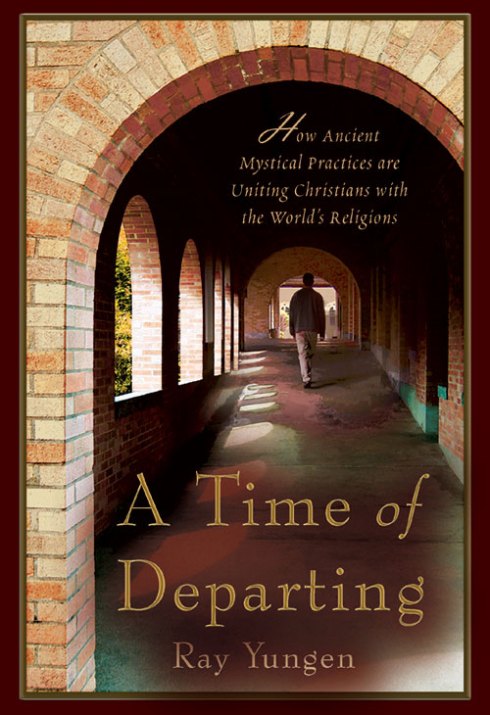
….In the early Middle Ages, there lived a group of hermits in the wilderness areas of the Middle East. They are known to history as the Desert Fathers. They dwelt in small isolated communities for the purpose of devoting their lives completely to God without distraction. The contemplative movement traces its roots back to these monks who promoted the mantra as a prayer tool. One meditation scholar made this connection when he said:
The meditation practices and rules for living of these earliest Christian monks bear strong similarity to those of their Hindu and Buddhist renunciate brethren several kingdoms to the East … the meditative techniques they adopted for finding their God suggest either a borrowing from the East or a spontaneous rediscovery.
Many of the Desert Fathers, in their zeal, were simply seeking God through trial and error. A leading contemplative prayer teacher candidly acknowledged the haphazard way the Desert Fathers acquired their practices:
…Thomas Keating who teaches on centering prayer explains, “He is acquainted with eastern methods of meditation …and writes “many serious seekers of truth study the eastern religions,…”
But a Christian is no longer a seeker but a possessor of the truth – when he walks by the word of God and in the Spirit. A believer in Christ does not call himself a spiritual seeker (beginner or seasoned) they have found the truth in Jesus Christ. But this is what the emergent movement is about, they are restless not finding peace in Christ they continue their spiritual journey…
(From Let Us Reason ministries)
They took him and brought him to the Areopagus, and said, “May we learn about this new teaching you’re speaking of? For what you say sounds strange to us, and we want to know what these ideas mean.” Now all the Athenians and the foreigners residing there spent their time on nothing else but telling or hearing something new. Then Paul stood in the middle of the Areopagus and said: “Men of Athens! I see that you are extremely religious in every respect. For as I was passing through and observing the objects of your worship, I even found an altar on which was inscribed:
- TO AN UNKNOWN GOD.
Therefore, what you worship in ignorance, this I proclaim to you.
It was a time of great experimentation with spiritual methods. Many different kinds of disciplines were tried, some of which are too harsh or extreme for people today. Many different methods of prayer were created and explored by them.
Attempting to reach God through occult mystical practices will guarantee disaster. The Desert Fathers of Egypt were located in a particularly dangerous locale at that time to be groping around for innovative approaches to God, because as one theologian pointed out:
[D]evelopment of Christian meditative disciplines should have begun in Egypt because much of the intellectual, philosophical, and theological basis of the practice of meditation in Christianity also comes out of the theology of Hellenic and Roman Egypt. This is significant because it was in Alexandria that Christian theology had the most contact with the various Gnostic speculations which, according to many scholars, have their roots in the East, possibly in India.
Consequently, the Desert Fathers believed as long as the desire for God was sincere–anything could be utilized to reach God. If a method worked for the Hindus to reach their gods, then Christian mantras could be used to reach Jesus. A current practitioner and promoter of the Desert Fathers’ mystical prayer still echoes the logical formulations of his mystical ancestors:
In the wider ecumenism of the Spirit being opened for us today, we need to humbly accept the learnings of particular Eastern religions … What makes a particular practice Christian is not its source, but its intent … this is important to remember in the face of those Christians who would try to impoverish our spiritual resources by too narrowly defining them. If we view the human family as one in God’s spirit, then this historical cross-fertilization is not surprising … selective attention to Eastern spiritual practices can be of great assistance to a fully embodied Christian life.
Do you catch the reasoning here? Non-Christian sources, as avenues to spiritual growth, are perfectly legitimate in the Christian life, and if Christians only practice their Christianity based on the Bible, they will actually impoverish their spirituality. This was the thinking of the Desert Fathers. So as a result, we now have contemplative prayer. Jesus addressed this when he warned His disciples: “And when you pray, do not use vain repetitions, as the heathen do.” (Matthew 6:7)
It should be apparent that mantra meditation or sacred word prayer qualifies as “vain repetition” and clearly fits an accurate description of the point Jesus was making. Yet in spite of this, trusted evangelical Christians have often pronounced that Christian mysticism is different from other forms of mysticism (such as Eastern or occult) because it is focused on Jesus Christ….
UNQUOTE
So again, to be clear, Biola is pushing a form of Eastern Metaphysics and universalism onto its student body.
How sad! Where is the adherence to the word and Jesus’ own warnings? Or does experience trump all else in Western Christianity?
The best resource in one-place on this topic is Lighthouse Trails. They have the most books, articles, and media on the matter. Apprising Ministries as well has a in-depth “category” section that helps narrow down topics and people in the movement (right hand column of their site). I recommend also my review of a book used at Biola, as well as my reasons for leaving a church after 12-years of investment (this post is a bit choppy, I apologize). Also, I recommend highly my chapter from my book on the matter as well, it is entitled “Emergen[t]Cy – Investigating Post Modernism In Evangelical Thought.”
UPDATES will appear below here and may include my thoughts to comments made about the above post from FaceBook or elsewhere (I may edit a bit my remarks to make understanding here easier):
UPDATES
M.S. mentioned the following:
- I am a current student at Biola and have not currently nor ever experienced what this article suggests. That does not mean it does not happen, but I have not witnessed it.
I respond:
I imagine that like in most large universities there is a divide… Like in the apologetics program — I doubt this topic will come up at all, but in the Biblical counseling or psychology type classes I bet this is touched on. In fact, a pastor showed me a book he was using in the classroom there (offered to let me borrow it, I got a used copy instead). He couldn’t see anything wrong with it, so I wrote about all the “wrongs” in it for him: “A Seven Day Journey with Thomas Merton” (http://tinyurl.com/cfalael). The book wasn’t being taught — at Biola — with a critical eye or a discerning spirit… but as wholly acceptable.
Mind you, when I had this discussion I had recently left my church of twelve years for getting elbow deep into the emergent movement. I tried to hang in there for a year, had a few discussions with the pastor, whom I knew and respect still, but the last straw came when the men’s college class started using the book “Irresistible Revolution,” by Shane Claiborne, with a forward by Jim Wallace.
So while I am not on campus at Biola and am not intimate with the vibe… I can tell you that most practices of centering prayer and the like are not founded in solid Biblical practice but as Ken Kaisch (quoted by Ray Yungen — linked in my post) said:
It was a time of great experimentation with spiritual methods. Many different kinds of disciplines were tried, some of which are too harsh or extreme for people today. Many different methods of prayer were created and explored by them.
I went through to my Masters and only encountered it (this emergent influence) in my last semester of Biblical counseling. Until then it was all kosher! Even the mandatory books on the syllabus for the class were fine. But the books recommended at the bottom that were not mandatory but recommended, kicked off my four-year-long study of the issues at hand.
I am glad you haven’t encountered it as of yet ~ The Angels Smile.
But the chapel at Biola didn’t have Phileena in like they would a “Sam Harris” in or “Richard Dawkins,” someone they are clear about being un-Biblical in their view, but want to have a debate, a thesis/antithesis, or a “hey guys, we do not advocate this, but you should know about it”... type “warning.” No, this is pushed as mainstream.
QUESTION [for you] M.S. — I would be curious what your professors think about Richard Foster? Maybe over the next few months just bring him up in general conversation with folks on campus, get a vibe from them… and then message me and we will talk about it. I have noticed Foster is a good dividing line to show if people are really using the Word for doctrine and reproof, the testing of spirits (2 Timothy 3:16; 1 John 4:1). I would love to hear back from your sociological experiment.
APPENDIX: Phileena’s Recommended Reading
ON CONTEMPLATION
- Bourgeault, Cynthia Centering Prayer and Inner Awakening
- Bourgeault, Cynthia The Heart of Centering Prayer
- Hauser, Richard Moving in the Spirit: Becoming a Contemplative in Action
- Heuertz, Phileena and Tickle, Phyllis Pilgrimage of a Soul: Contemplative Spirituality for the Active Life
- Johnston, William and Smith, Huston The Cloud of Unknowing: and The Book of Privy Counseling (Image Book Original)
- Jones, Tony Divine Intervention: Encountering God Through the Ancient Practice of Lectio Divina
- Keating, Thomas The Heart of the World: An Introduction to Contemplative Christianity
- Keating,Thomas Open Mind, Open Heart: The Contemplative Dimension of the Gospel
- Keating, Thomas; Thiemann, Ronald and Pagels, Elaine The Human Condition: Contemplation and Transformation (Wit Lectures-Harvard Divinity School)
- Laird, M.S. Into the Silent Land: A Guide to the Christian Practice of Contemplation
- Laird, M.S. A Sunlit Absence: Silence, Awareness, and Contemplation
- Merton, Thomas What Is Contemplation?
- Michael and Norrisey, Prayer and Temperament
- Neafsey, John A Sacred Voice Is Calling: Personal Vocation And Social Conscience
- Peers, Allison and St. John of the Cross Dark Night of the Soul
- Pennington, M. Basil Lecito Divina
- Rohr, Richard Everything Belongs: The Gift of Contemplative Prayer
- Rohr, Richard The Naked Now: Learning to See as the Mystics See
- Underhill, Evelyn Mysticism: A Study in the Nature and Development of Spiritual Consciousness by Evelyn Underhill
- Underhill, Evelyn The Spiritual Life
ON DISCERNMENT
- Green, Thomas H. Listening to the Music of the Spirit
- Hauser, Richard Moving In The Spirit
- Neafsey, John A Sacred Voice is Calling
ON FEMININE AWAKENING AND MUTUALITY
- Barton, Ruth Haley Equal to the Task: Men and Women in Partnership
- Lakey Hess, Carol Caretakers of Our Common House: Women’s Development in Communities of Faith
- Monk Kidd, Sue The Dance of the Dissident Daughter: A Woman’s Journey from Christian Tradition to the Sacred Feminine (Plus)
ON TRUE SELF/FALSE SELF
- Rupp, Joyce Open the Door: A Journey to the True Self
- Miller, Alice The Drama of the Gifted Child: The Search for the True Self
- Pennington, M. Basil True Self False Self
- Benner, David G. The Gift of Being Yourself

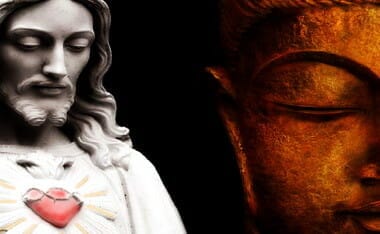
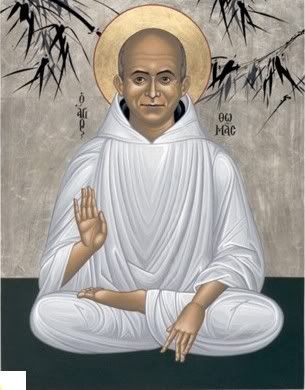

 The above quote/book by Thomas Merton has the introduction written by
The above quote/book by Thomas Merton has the introduction written by 


